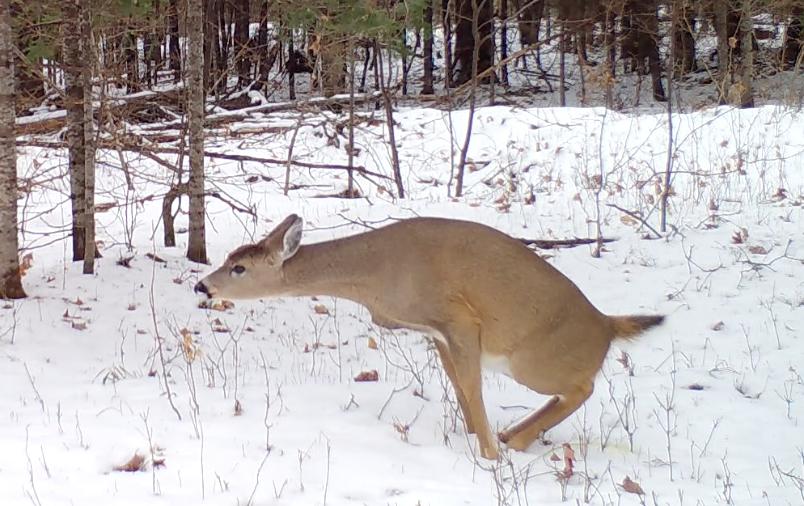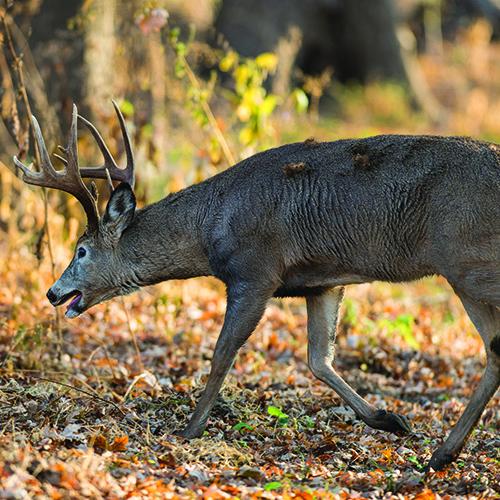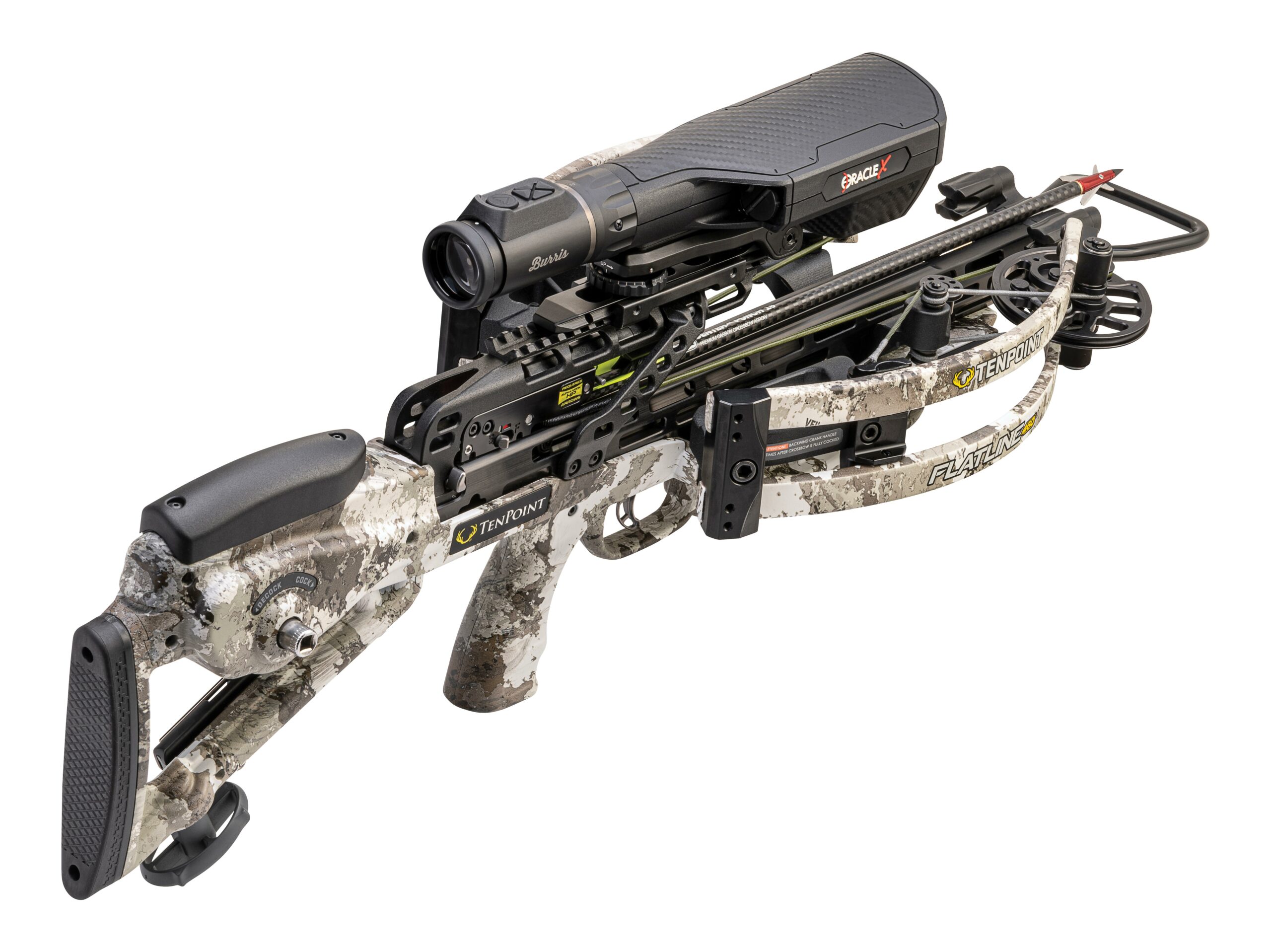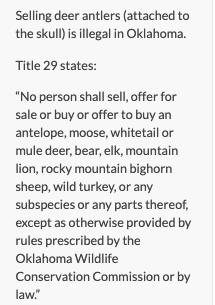If you have ever seen a deer engage in this behavior, you would correctly assume that it is most often conducted during the rut. However, this isn’t the only time of year deer do it, and — even more bizarre — bucks aren’t the only ones that engage in the scent-making and marking exercise.
Yes, of course, I am talking about rub-urination. That is because rub-urination is one of the most common whitetail behaviors, but it is also one of the most puzzling.
For example, we know through years of research that rub-urination is a common behavior exhibited by bucks. It has been so acutely observed by hunters that many rut-based urine lures over the years have centered on the scent of the tarsal glands. What’s interesting is that the tarsal glands themselves really don’t emit an odor. However, during the rut, buck routinely urinate over these glands while rubbing the glands together. The result is a dark staining of the “hocks” and a very noticeable odor.
This odor, presumably, is used by bucks to advertise their presence and status within the herd. The odor and the scent is believed to result as a combination of both the urine and the underlying oily secretions that emit from the sebaceous glands in the hocks (tarsals). What essentially happens here is that a bacterial reaction occurs when these fatty oils accumulate within the hairs of the whitetail’s tarsal glands.
MORE: Should You Pee in Deer Scrapes?
Rub-urination is a common behavior among mature bucks, and the more dominant a buck is, the more often he will exhibit this behavior during the rut. The behavior begins when the deer begins rubbing the hocks together while urinating over its back legs. The deer will then (usually) lick off the urine.
It is very common for does to exhibit the same behavior. In fact, it is not uncommon to see mature does lick each other’s hocks after rub-urination. That behavior among white-tailed does has puzzled many deer experts, including Leonard Lee Rue III.
“No matter how much I learn about deer behavior, I often encounter actions that puzzle me and for which I cannot find an answer,” Rue once wrote in his popular “Rue’s Views” column in Deer & Deer Hunting Magazine.
It should be noted that Rue was the first to document rub-urination behavior among white-tailed fawns. The legendary photographer and naturalist from New Jersey began studying whitetails in the 1950s when he was the manager of the Coventry Hunt Club. His early documentations of rub-urination behavior included photographs of a 5-day old fawn exhibiting the behavior in the wild.
The following photo is an interesting trail-camera video still-frame of a whitetail fawn exhibiting rub-urination behavior in northern Wisconsin in November 2019.

The late Charles J. Alsheimer also documented rub-urination behavior of deer throughout the year.
“The tarsal glands play a big part in a buck’s behavior during the rut,” Alsheimer said. “But throughout the year, the tarsal glands are constantly changing. For most of the year, they are cream to light brown in color. As October inches toward November in the North, whitetail bucks become more and more active, and they rub-urinate more often and, hence, the tarsal glands turn dark in color — sometimes appearing almost jet black.”


